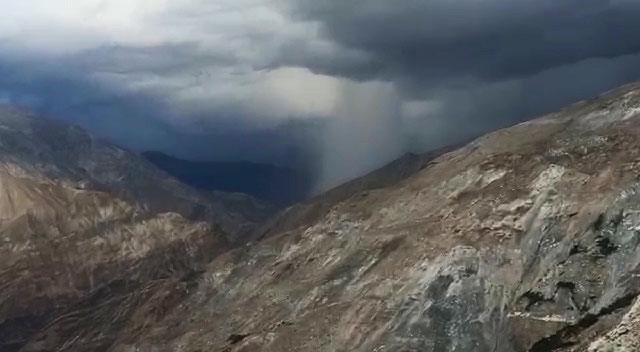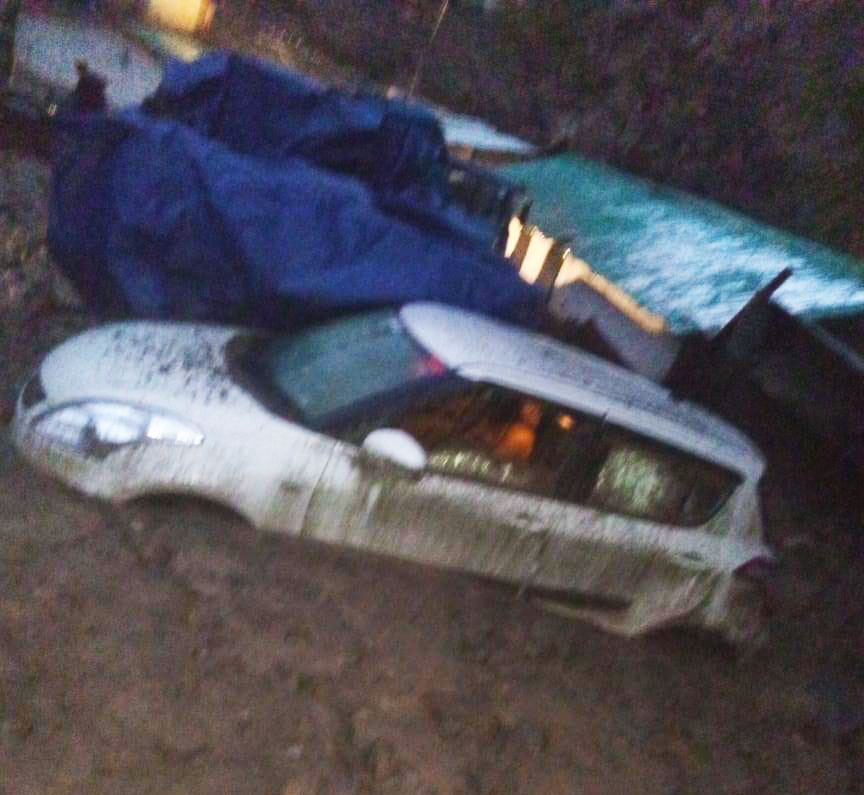Himachal
Travel Tips & Guides
Cloudbursts In Himachal:
4 most dangerous
places to visit

Cloudbursts are pretty scary. Here are the most dangerous places in Himachal Pradesh, you should stay away from during monsoon…
Most Dangerous Road: Kullu-Mandi Road on Manali-Chandigarh Highway | Video
A rather peaceful state, Himachal Pradesh becomes a dangerous place to travel during monsoon.
Every year the rain gods bring along with themselves cloudbursts, landslides and flash floods to Himachal Pradesh, which spends two months of July and August in a state of high alert.
Hilly states like Himachal Pradesh and even Uttarakhand have seen a rise in the number of cloudburst events in recent years. Climatologists and environmentalists believe that its due to the climate change as the rise in surface temperature is resulting in an increase in the number of cloudbursts and the accompanying flash floods and landslides.
Here is all about the cloudbursts in Himachal and the four top most dangerous and disaster-prone places to visit in Himachal during monsoon:
What is a cloudburst?
A cloudburst is massive amount of rainfall in a short time in a small area. But there is no single definition of a cloudburst. According to the India Meteorological Department (IMD), a rainfall greater that 10 cm in an hour is a cloudburst. By this definition, India witnessed only 30 cloudburst events in 46 years between 1970 and 2016. But many researchers and climatologists disagree with IMD. They say that there are also ‘mini cloudbursts’ in which the rainfall is of up to 5 cm per hour. Climatologists say various definitions of cloudburst are used in research.
What does a cloudburst look like?

It looks something like this. In a cloudburst, clouds form a towering vertical shape, which is also called Cumulonimbus cloud, and may extend up to several kilometers. We have got a footage of an actual cloudburst.
Why it’s called a cloudburst?

The term ‘cloudburst’ comes from an earlier-held view that such clouds are like balloons and when they burst it results in huge rainfall. Though this notion has been proven to be false, the term continues to be in use.
Why cloudbursts occur?
When warm air moves up and meets cold air at higher atmosphere, it triggers sudden heavy rainfall over a small area. The cloudburst event is also aided by atmospheric pressure difference. In a cloudburst, clouds get condensed at a very high rate.
Why cloudbursts happen more in mountains?
Cloudbursts can happen anywhere but yes their frequency and intensity are highest in the mountains because of the topography that provides favourable conditions. The warm air rushes up the slopes of mountains forming huge vertical clouds and a variation in temperature and atmospheric pressure results in a cloudburst.
What happens immediately after a cloudburst?

The massive amount of water that is dumped on to ground in a cloudburst event results in a flash flood, landslide, debris-flow and mud-flow. Cloudbursts often result in loss of life and property if there is human settlement or constructive near or on the path of rivers and rivulets. Experts say, all such constructions must be removed from near rivers and rivulets to avert losses.
Why there is a rise in the cloudburst events in Himachal?
Most experts believe that rise in average temperature due to climate change is behind the increase in the frequency and intensity of cloudbursts in Himachal and elsewhere in mountains. The rise in temperature causes warm air, which has a higher moisture-carrying capacity. When such warm air moves up and meets cold air at higher elevation, the result is sudden and extreme rainfall event.
Is rampant construction a factor?
Yes. Climatologists believe that rapid urbanisation in Himachal is also a contributing factor. Huge constructions in most tourist districts in Himachal have caused an increase in the surface temperature and in such ‘urban heat islands’ the frequency of cloudbursts have gone up. According to experts, when moisture-filled warm air meets cold air at higher atmosphere in such regions, it triggers a cloudburst.
Can cloudbursts be predicted?
Cloudbursts are sudden and local events. Presently, cloudburst prediction is not accurate. The government has installed Doppler Weather Radars (DWR) at seven locations in the Himalayan region. Himachal has one Doppler radar installed at Kufri in Shimla. There are plans to install two more such radars in Himachal. But experts say that Doppler radars provide real time rainfall information and what is needed is a better remote sensing technology that can give advance warning about a cloudburst so that preventive measures could be taken.
Which are the most dangerous places to visit in Himachal in monsoon?

Kullu, Kinnaur, Chamba and Kangra are the most disaster-prone districts of Himachal Pradesh. According to the state disaster management authority, the probability of natural disasters including cloudbursts, floods, flash floods, landslides and avalanches is highest in these four districts.
In Kullu, Parvati valley and Garsa valley are the most cloudburst-prone. Both these valleys witness cloudbursts every year and their number has gone up in the last decade or so. A study conducted by the Indian Himalayas Climate Adaptation Programme on the climate change effect in Kullu had also identified Parvati valley as major risk spot for monsoon floods, cloudburst events and potential Glacial Lake Outburst Floods (GLOFs).
During monsoon, rivers, rivulets and even waterfalls are in spate and the local administrations put a ban on going near them. The national highways crossing through these districts are also the most dangerous due to landslides and rockslides during monsoon. Many patches on highways connecting Chandigarh with Manali and up to Leh, Shimla with Kinnaur, Patahnkot with Chamba and then up to Bharmour often remain closed due to landslides. Even the Chandigarh-Shimla highway is very landslide-prone.
So, it’s better if you avoid travelling to Himachal in monsoon. If you do, you will be taking unnecessary risk and putting others also at risk.
And until next time, have a safe travelling experience.
(For more informative pieces, follow us on social media.)




